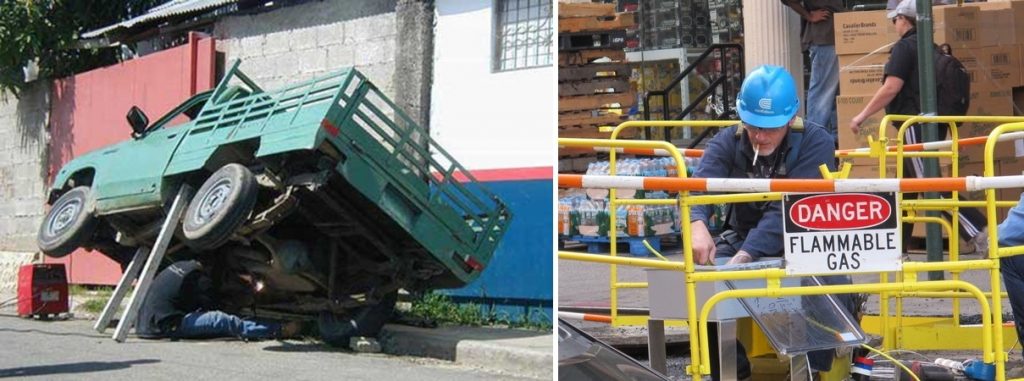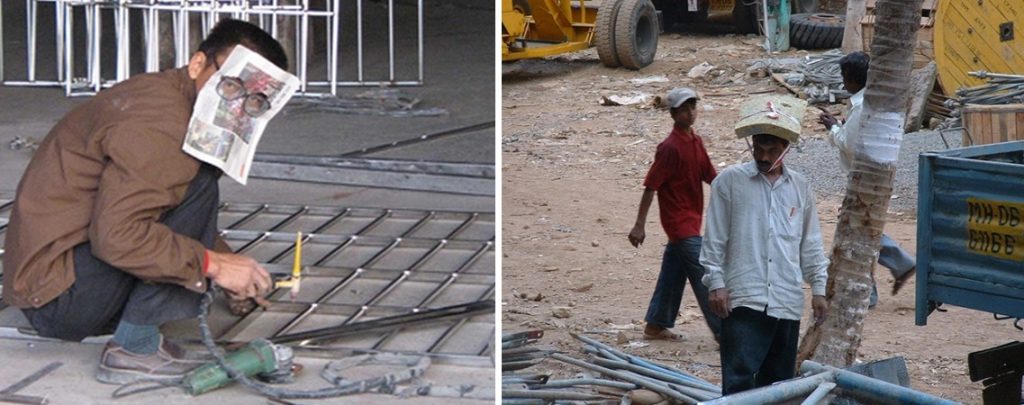It is just another day at work. You turn on your computer and the calendar shows your first-morning appointment: “Health and safety training. Full day.” You roll your eyes anticipating 8 long hours inside a training room to recap basic workplace safety, emergency procedures, risk assessment, correct use of Personal Protective Equipment, safe driving, etc.
You know how important workplace safety is – “it’s our number one priority!” the company president would say -, but you have the same training every year and you have hardly used any of it in your daily activities. It feels like another lost day in the bureaucratic world of corporate business, but you do not have an alternative… or do you?
After all, we all know everything about safe behavior, right?
Adding Gamification in Training
If you have ever worked for a big company, especially one in the manufacturing segment, the paragraph above may sound familiar. On one hand, the company cannot ignore the importance of health and safety training, but on the other, the employees do not feel motivated to do repetitive and pointless training sessions. How to solve this dilemma?
That was exactly the scenario we found at Aperam, one of the biggest stainless steel producers in the world and part of the multi-billion dollar Arcelor Mittal group. They had one crucial difference though: their innovation and safety teams were willing to change this scenario.
It was the end of 2017 when we first sat together to follow our 5 steps gamification process to design a Human-Focused experience and add the 8 Core Drives to their workplace safety training experience.
This is not an actual Aperam facility since we were not allowed to take pictures inside. You know, for safety reasons.
We visited Belgium and Brazil, their two main production facilities, to have a better grasp of their challenges while following our gamification design framework. By interviewing users and responsible personnel, we discovered their current safety training had the following main problems:
- Sessions were time-consuming and cost-ineffective;
- The engagement with the content was low;
- There was no integration with workflow;
- There was no cross-department interaction on workplace safety.
From this list, we were able to come up with one of the first crucial steps of our gamification framework: defining the Business Metrics. Together with the metrics, the field visits allowed us to come up with two different Player Types, one for Brazilians and a different one for European employees. We were not anticipating this, but it soon became clear that different Core Drives motivated each group. This early decision, in the second step of our framework, proved valuable even one year later, when we were designing the Minimum Viable Product (MVP).
Prototyping and Developing a Gamified Training App
Going back to 2017, we decided to come up with a high fidelity gamified prototype we would develop in the two and a half months remaining until the end of the year. The goal was to convince the company Directors of the importance of the gamification intervention to their health and safety training so we could follow-up with the full project for the gamified training app.
And that was exactly what we did. Within two and a half months, we went through our entire design process: Strategy Dashboard, Brainstorming, Feature List, Battle Plan and, finally, the high fidelity gamified wireframes. The result? Directors loved it and backed up the development of the actual app.
In 2018, we started developing Aperam’s product, called SAFE app, that would demand us 5 months of design and development to complete. During this period, we created the entire artwork around the gamification narrative, agreed on all the technical decisions relevant to the project and tested the product with 36 Aperam employees for feedback and user experience adjustments. The result was a Net Promoter Score of 67 for the MVP and some employees asking if they could download the app right away to play with their coworkers.
How Core Drives Shaped our Gamification Design
For those familiar with the Octalysis framework and how we design for human motivation, you know the importance of the 8 Core Drives. For this gamified training app, we considered the following ones would be decisive for an engaging experience:
(if you have never heard about the 8 Core Drives, you might like to quickly check this article or this one to know more about what is gamification and what is not.)
CD 2 – Development & Accomplishment
It is crucial to consider this White Hat extrinsic Core Drive when users are learning something. Especially when there is a structured list of content to be covered, as usually happens on corporate training. The gamification experience should make it clear to users how much they have progressed, what is still missing, and how well they are performing on the covered content. This is when the design team can use some PBL (Points, Badges and Leaderboards) to drive Development and Accomplishment. Alternatively, they can use some more creative alternatives as we did with the Protector avatar. We made it as an evolving creature that would become progressively closer to stainless steel the more health and safety content the users consumed. The Protector starts as an inspiring and strong figure covered with iron ore that would lose parts of it to reveal the desirable and shining stainless steel beneath it. This is a gamification technique that combines more than one core drive to engage users.
Besides this, we added CD2 on a different format called Daily Cards. In corporate environments, it is natural because of vacations, trips, and others, to not being able to log in to a particular system or experience every day or week. When this happens, users usually feel disengaged with the experience. The Daily Cards mitigates both problems, giving users small and easy-to-accomplish tasks that are going to help with the overall progress by sending triggers and reminders about new or pending content and community activity.
CD 3 – Empowerment of Creativity & Feedback
This powerful and elusive core drive is one we try to add to all of our gamification designs since it has the potential to create a long lasting experience. With Aperam’s app, it was not different since we designed it to accompany employees for a long time. Safety training is something they will face throughout their entire careers in the company, so it is important to add meaningful choices and relevant gamification strategies to the experience to make it last longer. We did this in two different ways:
1) Presenting the workplace safety content as an underground map the players should explore while avoiding dangers and collecting prizes and boosters.
2) Allowing users to test themselves at any time about how much of the content they know in the format of a battle between their Protector avatar and an enemy threat or menace. It added CD3 because of the different ways they could defeat the enemy, solo or in groups, with or without boosters, covering a lot of the content beforehand or risking themselves without any prior knowledge. Every time the enemy was defeated, they get new boosters that help defeat a tougher enemy next time (does anyone hear the words ‘game loop’ in their minds?). Every time we are able to add a consistent game loop to our gamification design, we are raising the odds of a lasting experience.
CD 7 – Unpredictability & Curiosity
We added a bit of Black Hat Motivation to create the urgency of going back to the gamified training app or simply trying it for the first time. This requires careful design because Black Hat can generate an addictive behavior if we design the whole experience based on it. On Aperam’s app, besides the aforementioned underground map that reveals itself as users progress through it, we allow users to spin a wheel for a variety of rewards. We also give them random treasure chests after defeating each enemy. When users are short on time or motivation to interact with the app, a quick spin of the wheel is enough to keep them engaged in the gamification experience while earning boosters that could prove decisive in future interactions.
CD 5 – Social Influence & Relatedness
This core drive deals with group dynamics and interactions, especially on those created between employees. We had different evaluations of how powerful this CD would be to motivate both Brazilian and European employees. That is why we created the possibility of group and solo quests to achieve the same result. The difference is that, for group quests, users would be able to have a small internal competition to determine the “greatest contributor” of the week and exchange boosters and power-ups among them for optimal performance. In every gamification project we develop, it is crucial to add some sort of interaction between the players.
Final Remarks about the Gamified Training App
Aperam’s gamified training app is going to be launched during 2019 with great expectations from all stakeholders. We are tracking key business metrics to make sure the gamification experience is not only engaging, but also employees are acting safer and the number of accidents is decreasing. This is crucial to all of our projects, since different from a game, with gamification we are designing an experience focused on affecting specific business metrics.
If you could relate with this article and you have any digital engagement problems on your hands, contact us to learn how we can solve them with high ROI Human-Focused Experience Design.
P.S.: For Non-Disclosure Agreement reasons, we were not able to share app screenshots or other specific details about the product design.








